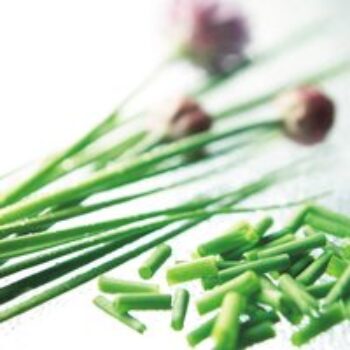- In Southeast Asia, the time-honored tradition of keeping songbirds in cages has resulted in an unsustainable trade in wild-caught songbirds and an alarming decline of many species — a phenomenon ecologists have termed the Asian songbird crisis.
- A recent study finds evidence for a new family of poisonous birds — the pitohuis that are endemic to New Guinea — featuring in the songbird trade in Indonesia.
- Researchers analyzing bird market surveys over a 30-year period have found that pitohuis first entered the trade in 2015, both online and in bird markets, and their trade numbers have since increased.
- Although it’s illegal to buy or sell these birds in Indonesia, the thriving trade suggests a need for closer monitoring and stricter enforcement of laws, say conservationists.
Among New Guinea’s rainforest inhabitants is a group of birds called pitohuis, chatty songbirds that stand out for their loud, attractive songs. But there’s more to these birds than their songs: their poison.
Pitohuis are among the few poisonous birds on the planet. Their skin and feathers contain potent neurotoxins, which help them fight off parasites such as lice, ticks and fleas, and predators, including humans. When humans handle these birds, the neurotoxins irritate the nasal passage and cause allergy-like symptoms. Yet even the poison doesn’t seem enough to protect pitohuis from the songbird trade, as new research shows.
A study published in the journal Bird Conservation International by a team of international researchers and an NGO presents the first evidence of poisonous pitohuis (genus Pitohuis) entering the songbird trade in Indonesia, which occupies the western half of the island of New Guinea. The researchers find that these birds appeared in the trade in 2015 and have since been sold in bird markets and online platforms, raising conservation concerns about the illegal trade of these birds.
Birdkeeping is a traditional practice rooted in Javanese culture, where a third of households keep songbirds. Studies estimate that the island has anywhere between 66 million and 84 million caged birds. For most, it’s a cherished hobby, and for a few, they’re prize-winning contestants in singing competitions.
But this penchant for songbirds has a dark side: the Asian songbird crisis. With soaring demand for songbirds, thousands of wild-caught birds are entering the trade in Southeast Asia, resulting in massive declines of their wild populations. In Indonesia alone, the songbird trade has affected at least 26 globally threatened species. More than three-fourths of birdkeepers keep native species, often caught in the wild.
“It’s a very large, almost industrial-scale use of wild birds, and people want variety,” says study lead author Vincent Nijman from Oxford Brookes University, U.K., who has studied the Indonesian bird trade for more than three decades. “A large part of the songbird trade in Indonesia is wild-caught birds, which, by definition, makes them unsustainable to be kept in a small cage and to be kept as pets.”

The recently published research is part of a decades-long project in which researchers made regular visits to bird markets on the Indonesian islands of Sumatra, Java, Bali, Lombok and Sulawesi and gathered data about the species being sold. In surveys carried out from 1994 to 2023, they recorded nearly 800,000 wild-caught birds and collected information about their geographical origins, price, and number of individuals sold. They then analyzed this data to find how trends in birdkeeping changed over time.
Like fashion trends, species favored by birdkeepers change over time. The more unique a bird or its song, the higher its price in the bird market.
“Species that used to be common in markets are now gone, partially because they’re no longer left in the wild,” Nijman says, adding that sometimes, certain species appear all of a sudden and stay in the market for short or long periods. “It’s a replacement, whereby one species replaced by the next is replaced by the next is replaced by the next.”
Pitohuis are no exception. The researchers found that between 1994 and 2014, no pitohuis were sold in Indonesian bird markets. However, that changed in 2015, as surveys recorded 18 individuals from the genus traded in a Javan bird market — the first instance of these birds entering the trade. This discovery prompted the researchers to scout online marketplaces, which are increasingly becoming hubs for wildlife trade. From 2015 to 2023, they recorded 113 pitohuis for sale in 12 bird markets and 199 for sale online, 54 of which were hooded pitohuis (Pitohui dichrous), the most poisonous of all pitohuis.
These findings agree with the bird seizure incidents recorded by TRAFFIC, an NGO that monitors the illegal wildlife trade. Serene Chng, program manager at TRAFFIC and co-coordinator of the Asian Songbird Trade Specialist Group at the IUCN, the global wildlife conservation authority, says TRAFFIC has recorded at least nine seizure incidents involving 152 pitohuis between 2022 and 2024. Prior to 2019, no seizures were recorded. These seizures, she says, represent an unknown fraction of the trafficking.
“Typically, pitohuis are not the only species that are smuggled from New Guinea,” Chng says. “They would be smuggled together with other [New Guinean] species like cockatoos and wallabies.”
The study finds that most pitohuis were sold in the bird markets of eastern Java and Bali, with prices ranging from $66 to $346. In some cases, these birds were mislabeled as Papuan straw-headed bulbuls, to sound like the once-prized and now critically endangered and extremely rare straw-headed bulbul (Pycnonotus zeylanicus), a species coveted in the songbird trade. Most pitohui traders were based in Java (around the three biggest cities of Jakarta, Surabaya and Semarang), with Surabaya, at the eastern end of Java, serving as the main entry point for the birds arriving from New Guinea.
The findings serve as an “early warning” for scientists and conservationists in Indonesia, says ecologist Mohammad Irham from Indonesia’s National Research and Innovation Agency (BRIN), who wasn’t involved in the study. He says he expects the demand for these birds to increase in the future because they’re new to the trade and have an attractive song. “When the demand is quite high, more birds will be caught from the wild, and in the long term, we have to see whether that will impact the local populations.”


Need for continuous monitoring and enforcement
In recent years, Indonesia’s songbird trade has been tightly regulated, with quotas on the number of birds that can be caught in each province for each species in trade. Irham, who’s among the scientists consulted in this process, says it involves looking at the levels of trade in the species and their populations in the wild. Only birds and other wildlife with a quota can be traded legally.
Pitohuis were first described by scientists only in the 1990s. All six known species have a conservation status of least concern on the IUCN Red List. And though they’re not listed as protected species in Indonesia, there are also no official quotas for their trade, making their sale currently illegal. “We should not be able to see these birds in trade, and we do,” Nijman says, adding that this shows the lack of enforcement of regulations around the songbird trade.
Although the scale of trade seen in pitohuis is lower than for many other species, and we don’t yet know if this trade impacts wild populations, Nijman says evidence from other species suggests it’s not going to be sustainable. He says the trade, therefore, must be closely monitored — a conclusion Chng also agrees with. If the trade is found to impact wild populations, she says, authorities could take further actions “like including them as a protected species on the law or raising awareness for law enforcement so that they are looking out for these birds.”
With online marketplaces emerging as hotspots for wildlife trade, Nijman says tech companies such as Facebook and Instagram, whose policies prohibit such trade, also have a responsibility to stop the practice on their platforms. “It shouldn’t be that difficult to shut them all down if they want to,” he says. “There’s no excuse not to do it.”
Banner image: A Hooded Pitohui (Pitohui dichrous) from Papua New Guinea. Pitohuis are one of the few poisonous birds that have neurotoxins on their skin and feathers. Image by Benjamin Freeman via Wikimedia Commons (CC-BY-4.0).
Thousands of birds seized in massive Indonesian bird-trafficking bust
Citations:
Marshall, H., Collar, N. J., Lees, A. C., Moss, A., Yuda, P., & Marsden, S. J. (2020). Spatio-temporal dynamics of consumer demand driving the Asian Songbird Crisis. Biological Conservation, 241, 108237. doi:10.1016/j.biocon.2019.108237
Marshall, H., Collar, N. J., Lees, A. C., Moss, A., Yuda, P., & Marsden, S. J. (2020). Characterizing bird‐keeping user‐groups on Java reveals distinct behaviours, profiles and potential for change. People and Nature, 2(4), 877-888. doi:10.1002/pan3.10132
Nijman, V., Abdullah, A., Ardiansyah, A., Chavez, J., Fairey, A., Hedger, K., … Nekaris, K. A. (2024). Poisonous pitohuis as pets. Bird Conservation International, 34. doi:10.1017/s0959270924000297
FEEDBACK: Use this form to send a message to the author of this post. If you want to post a public comment, you can do that at the bottom of the page.








